If you intend to visit South Korea, then you should definitely understand the local currency. Of course, the first thing you need to know is the exchange rate. But history is not unimportant. After all, during the trip you will constantly deal with Korean banknotes and each time you will see the same faces on them. And, like any self-respecting tourist, you should definitely learn a little more about the people whose faces are decorated with Korean money.
Briefly about the main thing
- Title: South Korean Won.
- Designation: ₩.
- Currency Code: KRW.
- Face value (banknotes): 1000 ₩. 5,000 ₩, 10,000 500, 50,000 ₩.
- Denomination (coins): 10 ₩, 50 ₩, 100 ₩, 500 ₩.
- Central Bank of the country: Bank of Korea.
- Korean Won to Euro: 1000 ₩ = 0.81 €.
- To the dollar: 1000 ₩ = $ 0.88.
- To the ruble: 1000 ₩ = 50.02 rubles.
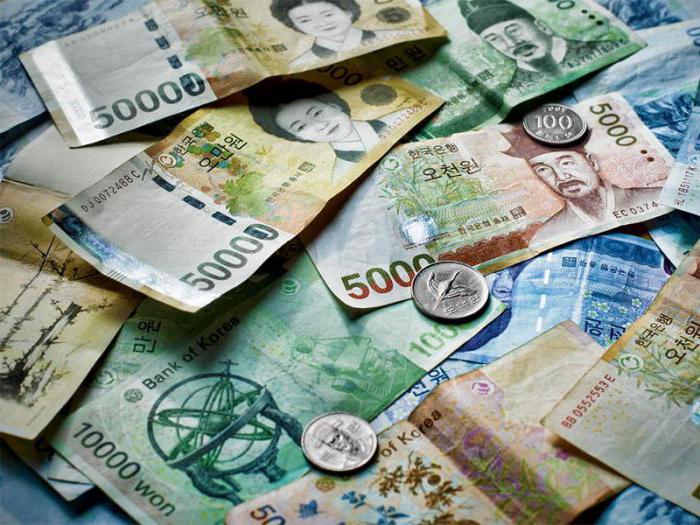
Story
Vaughn has been used as a monetary unit for thousands of years. However, from 1910 to 1945, Korea was a Japanese colony, and Japanese money (yen) was used in the country.
In 1945, after the Second World War, the country split into South and North Korea. Then a new currency was introduced - won.
Initially, the Korean won was pegged to the US dollar at the rate of 15 ₩ = $ 1. This was followed by a series of devaluations, some of which were associated with the Korean War.
By 1951, the won depreciated to 6,000 won for 1 dollar. In an attempt to solve this problem, in 1953 a new currency was introduced - hwan, with a rate of 1 to 100 in relation to the won.
Until 1962, the currency of South Korea was hwan. Then, Korean money again won, and then a lengthy process began, aimed at moving to a floating exchange rate.
Despite some shocks, the course remains relatively stable and effective.
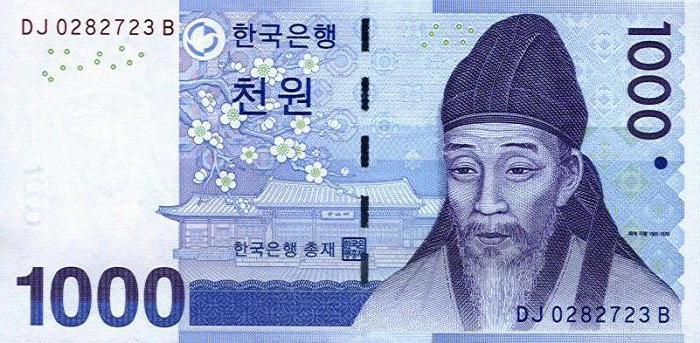
1000 won - thinker Lee Hwang (1501-1570)
On the front side of the banknote is an outstanding Korean scholar of the Joseon Dynasty - Lee Hwang. He had incredible mental abilities, was the author of many books on Confucianism. He was also extremely talented in calligraphy and poetry. Lee Hwang is a prominent politician of the time. During his forty-year career, he faithfully served the four monarchs of the Joseon era.
On the back of the banknote is a private Confucian academy founded by Li Hwan.
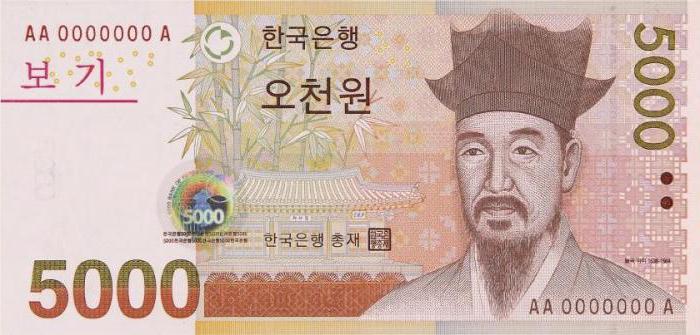
5000 won - politician Li Yi (1536-1584)
Li Yi is a respected politician and one of two well-known scientists, representatives of Confucianism, a student of Li Hwan (the person depicted on the 1000 banknote). He was incredibly smart: already at 3 years old he was able to read, and by 7 he finished studying the basics of neo-Confucianism. At the age of 13, he passed the exam for admission to public service, and at 16, after the death of his mother, Sin Saimdan (depicted 50,000 won), decided to devote his life to the study of Buddhism.
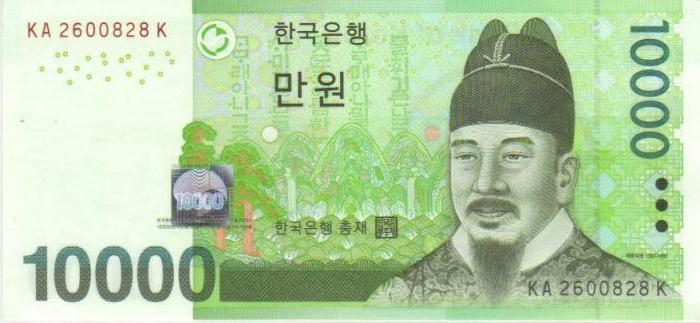
10,000 won - King Sejon the Great (1397-1450)
King Sejong is called great for a reason. This historical figure is known to every citizen of the country, and it is not for nothing that his portrait adorns Korean money. It is this king who is considered the creator of Hangul - the Korean alphabet. During his reign, he contributed to the significant advancement of the country not only in literature, but also in science, military and technical fields. His statue, located opposite the Gyeongbokgung Palace, is one of the must-see attractions in Seoul.
On the back of the banknote you can see 3 inventions of the great ruler (by the way, their bronze copies are also located next to the statue of King Sejong): a globe, a rain gauge and a sundial.
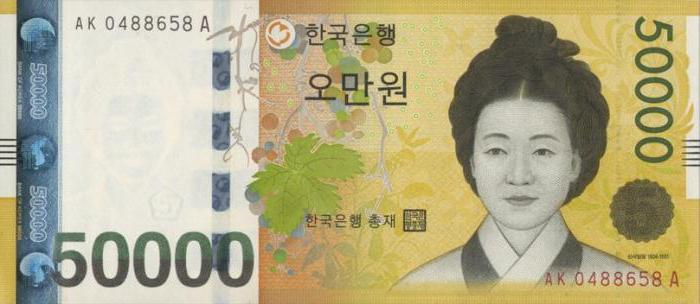
50,000 won - artist Sin Saimdan (1504–1551)
Sin Saimdan is a famous artist, calligrapher, poet and writer. She is the first woman to appear on a South Korean banknote.
She became famous as a good wife and a wise mother, and also did many things that women of that time could only dream of. For example, Sin had no brothers, so she acted as the eldest son for parents. To a certain extent, it can be considered a feminist, because Saimdan was able to get an education, which in those days was considered the prerogative of men.
On the back of the banknote is a Japanese plum - one of the artist’s favorite plants.

Coins
Today it is extremely rare to find coins with a denomination of 1 and 5 won, but until recently they were actively in use. Depending on the face value, the “eagle” looks like:
- 10 won - the Tabotkhap pagoda, known as the pagoda of many treasures in the Pulguksa temple;
- 50 won - rice flower;
- 100 won - a portrait of Lee Susin, the Korean fleet commander;
- 500 won - Turumi - flying red-headed crane.
Korean money is fairly easy to distinguish: banknotes are distinguished by color and size, coins by size. Like the money of many other countries, it is permeated with a hidden meaning for local residents, and for tourists it can be a good souvenir if you suddenly did not have enough time to buy magnets.